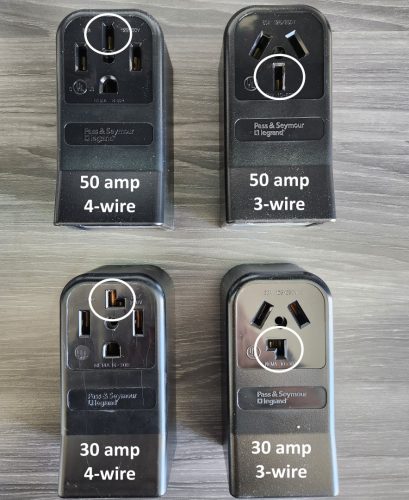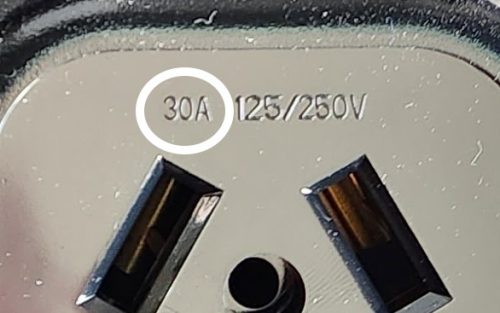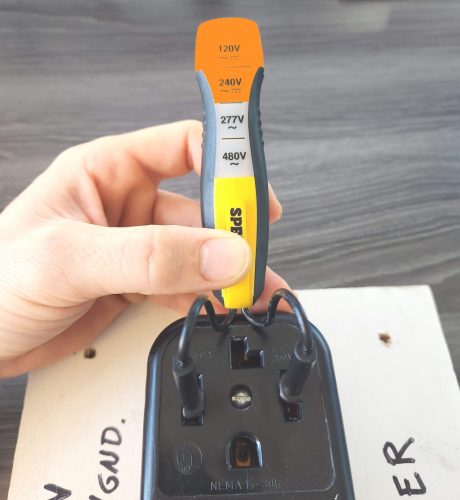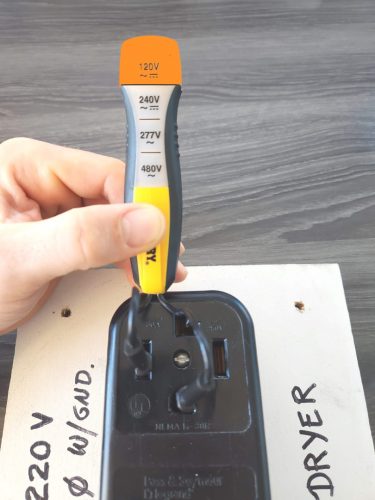How is a home inspector supposed to inspect a 240-volt outlet? Home inspection standards of practice don’t go into this level of detail, so it’s up to each home inspector to decide for themselves what the proper standard of care should be. Here at Structure Tech, we check to make sure that the right amperage outlet is used, and we check to make sure that the outlet is energized.
For the record, the proper term for what I’m referring to is a receptacle. It’s that thing you plug your electric clothes dryer or electric range into. But most people call these “outlets”, so I’ll keep saying outlet too.
Three prongs or four prongs? Either is fine.
240-volt outlets come in two varieties; 3-prong or 4-prong. A 240-volt appliance will run off of two hot wires, creating 240 volts. There’s no need for a neutral wire. The third wire that comes into a three-prong 240-volt outlet is the ground wire, and under normal circumstances, there should never be any voltage carried on this wire.
But then appliance manufacturers started putting 120-volt motors and electronic controls into their appliances. These would run off 120 volts, so they’d use the ground wire on a 240-volt appliance to complete a 120-volt circuit. It wasn’t a lot of current, but still, that’s not what the ground wire is meant for. So in 1996, the rules changed, and all new 240-volt outlets had to have a 4th prong for a neutral wire.
Existing installations can stay the way they are, and connecting a new appliance to a 3-wire 240-volt outlet is still acceptable. This is why clothes dryers and ovens don’t come with appliance cords; your appliance might need a 3-wire or 4-wire cord.
Dryer outlet vs. Range outlet
Electric clothes dryers run off of 30-amp circuits, while electric ranges typically have 40-amp or 50-amp circuits. These two outlets do not have the same hole patterns to ensure they’re not used interchangeably. See below.
On a 30-amp dryer outlet, you’ll have one slot with a right-angle. On a 50-amp outlet, all of the slots are straight. If you forget, take a close look at the outlet and you’ll probably see stamping on it to indicate the amperage.
One thing we don’t do, however, is unplug 240-volt appliances to verify these things.
Testing 240-volt outlets
If we come across a 240-volt outlet with nothing plugged into it, we test it to ensure it’s energized. The easiest way is to use a six-dollar two-lead tester, like the Sperry 80-480VAC/DC tester. The two “hot” slots should have approximately 240 volts. These slots will always be a mirror image of each other.
Voltage from either of these slots to any other slot should equal 120 volts. A volt-ohm meter could give us the same information, but using one is a lot clunkier.
Summary
As a home inspector, I verify 240-volt outlets are the correct amperage for the location and verify power to the outlet.





